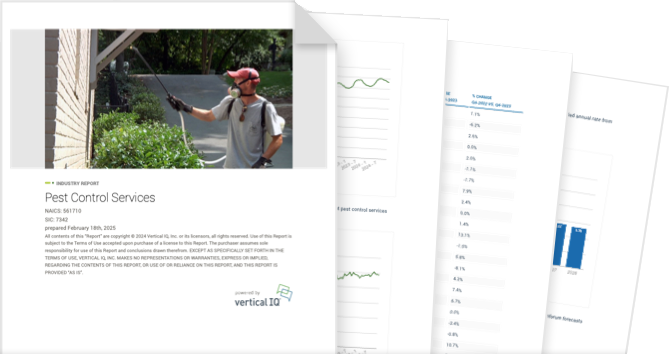Electronic Shopping NAICS 459999

Unlock access to the full platform with more than 900 industry reports and local economic insights.
Get access to this Industry Profile including 18+ chapters and more than 50 pages of industry research.
Industry Summary
The 53,556 Electronic shopping retailers in the US are online-only retailers, with no or limited-format physical stores. The business format ranges from the independent specialized seller with one or a few lines of products to the large conglomeration of businesses selling a broad range of products on a single e-commerce website (Amazon, Etsy). Websites that bring together third-party sellers are known as marketplaces and typically earn revenue by charging sellers a fee that is either fixed or based on a percentage of sales or a number of transactions.
Fierce Ecommerce Competition
Electronic shopping sites must find ways to stand out in an e-commerce market flooded with domestic and foreign retailers as well as dominant players like Amazon.
Delivery Race Slows
The need for speed in ecommerce delivery is easing with shoppers showing a greater willingness to wait for deliveries of household items as concerns grow over the cost of fulfillment.
Recent Developments
Nov 26, 2025 - Generative AI Lifts Online Retail Sales by 16.3%: Study
- Generative AI is reshaping the electronic retail sector by driving measurable gains in sales and customer engagement, according to research from Columbia Business School and partners. The researchers found that AI enabled workflows boosted sales by up to 16.3%, with AI powered chatbots lifting conversion rates by 21.7%. Search refinement added nearly 3% in sales, while richer product descriptions drove a 2% increase, particularly for listings with limited detail. Aggregated, the improvements equated to $4.6 to $5 in added annual value per consumer, accounting for roughly 6% of global e-commerce per user revenue growth between 2023 and 2024. Notably, gains came without labor cuts, instead enhancing customer experience through smoother shopping journeys. Smaller sellers and newer shoppers benefited most, with conversions among inexperienced buyers rising 26%, compared to 20% for veteran consumers. For electronic retailers, the findings highlight AI’s role as a market equalizer, narrowing performance gaps while reinforcing the need to integrate customer centric digital tools.
- Consumer sentiment and confidence weakened in late 2025, creating immediate challenges for US electronic retailers. The University of Michigan’s Index of Consumer Sentiment fell 6.2% month-over-month in preliminary November data to 50.3, nearly 30% lower year-over-year, with both current conditions and expectations indices sharply down. Rising inflation expectations, 4.7% year-ahead and 5.9% in October Conference Board data, combined with anticipated higher interest rates, point to tighter household budgets and reduced discretionary spending. While the Conference Board’s Present Situation Index rose to 129.3, short-term expectations dropped to 71.5, underscoring consumer caution. For electronic retailers, the data suggests slower sales of non-essential devices, cautious holiday demand, and potential margin pressures as shoppers delay upgrades or seek lower-cost alternatives. Focus on inventory discipline, promotional strategies, and flexible financing options will be critical to sustaining resilience in a market where consumer confidence is softening.
- According to a report in Digital Commerce 360, Deloitte is projecting that ecommerce holiday sales in the US will grow 7% to 9% in 2025, outpacing overall retail growth, which is expected to rise just 2.9% to 3.4%. The forecasted ecommerce total of $305 to $310.7 billion reflects stable year-over-year growth, driven by rising disposable income and consumers’ preference for online deals. In 2024, US ecommerce holiday spending was $285 billion, an increase of 8%. For the electronic shopping industry, the forecast signals continued strength in digital consumer demand despite economic uncertainty and inflationary pressures. Electronic shopping platforms may need to optimize inventory, pricing strategies, and mobile experiences to meet demand and maintain margins amid tariff-related cost increases and shifting consumer behavior.
- According to the Global Port Tracker from the National Retail Federation and Hackett Associates, US ports handled 2.1 million TEU in September 2025, down 9.3% year over year, with October projected at 1.9 million TEU, an 11.5% decline. A sharper drop is expected in Q1 2026, with January forecast at 1.98 million TEU, down 11.1%. For electronic retailers, the declines highlight ongoing supply chain pressures, as softer import volumes and unpredictable tariff policies complicate sourcing strategies. Tighter inventory pipelines, longer lead times, and higher costs are likely to constrain product availability, particularly for high-demand categories such as smartphones, laptops, and consumer electronics. Retailers face difficult planning decisions, balancing margin pressures against the need to maintain competitive pricing and stock levels. Hackett Associates founder Ben Hackett noted that the on-again, off-again tariff policy in 2025 has made planning difficult for importers and carriers. Seasonal slowdowns in November and December may further test inventory resilience.
Industry Revenue
Electronic Shopping

Industry Structure
Industry size & Structure
The average electronic shopping retailer operates out of a single location, employs 15 workers, and generates $21 million annually.
- The electronic shopping retailer industry consists of 53,556 companies that employ over 780,598 workers and generate $1.1 trillion annually.
- The industry is concentrated at the top and fragmented at the bottom with the top 20 firms accounting for about 53% of industry sales.
- Large companies include Amazon, eBay, QVC Group, Etsy, Wayfair, and Zara. Many large companies have international operations.
Industry Forecast
Industry Forecast
Electronic Shopping Industry Growth

Vertical IQ Industry Report
For anyone actively digging deeper into a specific industry.
50+ pages of timely industry insights
18+ chapters
PDF delivered to your inbox
